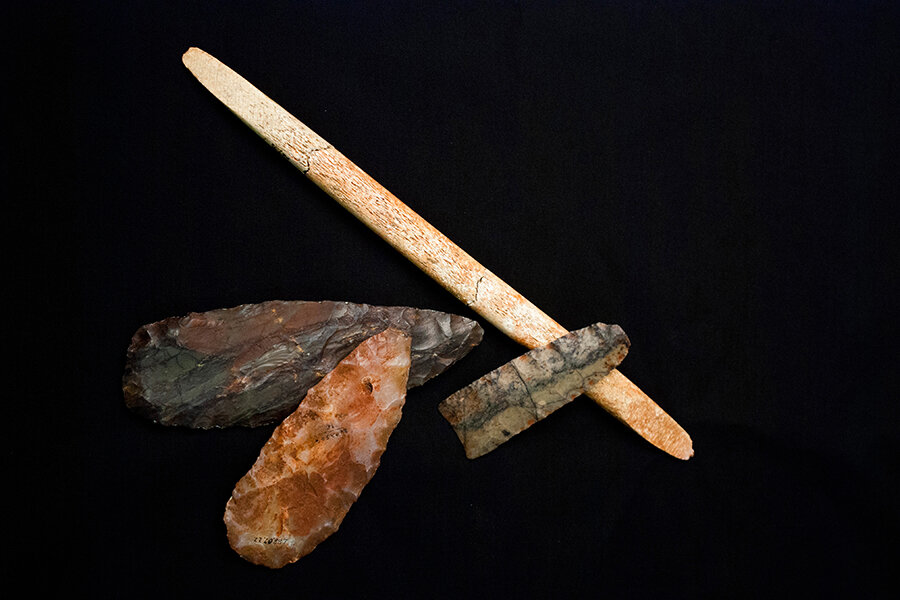Ancient toddler's skeleton reveals clues to Native American ancestry
Loading...
The bones of a one-year-old boy found in a 12,600-year-old burial site in Montana is shedding new light on the ancestry and origins of Native Americans.
After mapping the genome of the bones obtained from the burial site, called the Anzick Site, researchers found that the boy was more related to Native Americans than to any other group in the world, says Eske Willerslev, the University of Copenhagen paleobiologist who led the study.
It seems as though the population to which the child and his family belonged are direct ancestors to virtually all Native Americans in South America and Mexico, first author of the paper Morten Rasmussen from the University of Copenhagen told the Monitor. There are also similarities seen with Native Americans in Canada, Dr. Rasmussen says.
The findings of the study was published in a paper titled "The genome of a Late Pleistocene human from a Clovis burial site in western Montana " on Feb.12 in science journal Nature.
The boy was a member of a group of early Americans known as the Clovis, named for the distinctive artifacts – such as fluted projectiles and spear points – found in the 1920s and 1930s near Clovis, New Mexico.
Since then, these artifacts have become a trademark of Clovis culture, says Michael Waters, professor at the Center for the Study of the First Americans, Departments of Anthropology and Geography, Texas A&M and one of the authors of the paper.
First discovered on a private farm in 1968, the burial site in Montana contains hundreds of such artifacts.
Dr. Waters believes that the Clovis emerged somewhere in the region that constitute today's United States some 13,000 years ago and that they lasted for 400 years before disappearing. Their big spears were used to hunt mammoths, mastodons, and giant bison.
Their ancestors came from Asia, particularly Siberia, crossing the Bering land bridge about 15,000 years ago, he adds.
These findings counter the so-called Solutrean hypothesis, an alternative model of the settlement of the Americas that suggests that the ancestors of the Clovis crossed the Atlantic from Western Europe.
The researchers found that Native American ancestors who came from Siberia split into two different groups. "One group is ancestors to the Native Americans presently living in Canada and the other one – which is represented by the Clovis boy – is the ancestor to virtually all Native Americans in South America and Mexico," according to a press release from the University of Copenhagen.
Extensive genomic data from Native Americans in the United States is not yet available, says Dr. Willerslev, so it remains unclear if they are descended from the Clovis peoples. Native American groups in the US are often reluctant participate in such studies, says Rasmussen.
Study co-author Sarah Anzick, whose family owns the title to the land where the burial site is located, expressed interest in the findings. "After 46 years since the discovery on my family land, we are finally hearing this child's story through his genetic legacy," she said. "I find it remarkable that the descendants of the Clovis culture, which seemed to have vanished 12,600 years ago, are still alive and thriving today."
Anzick, who was two years old when the Clovis boy's skeleton was unearthed, and who went on to become a genome researcher, helped seek permission from members of the local Native American tribes to carry out this study.
The human remains from the site will be reburied later this year in cooperation with Native American tribes in Montana, says Willerslev.








